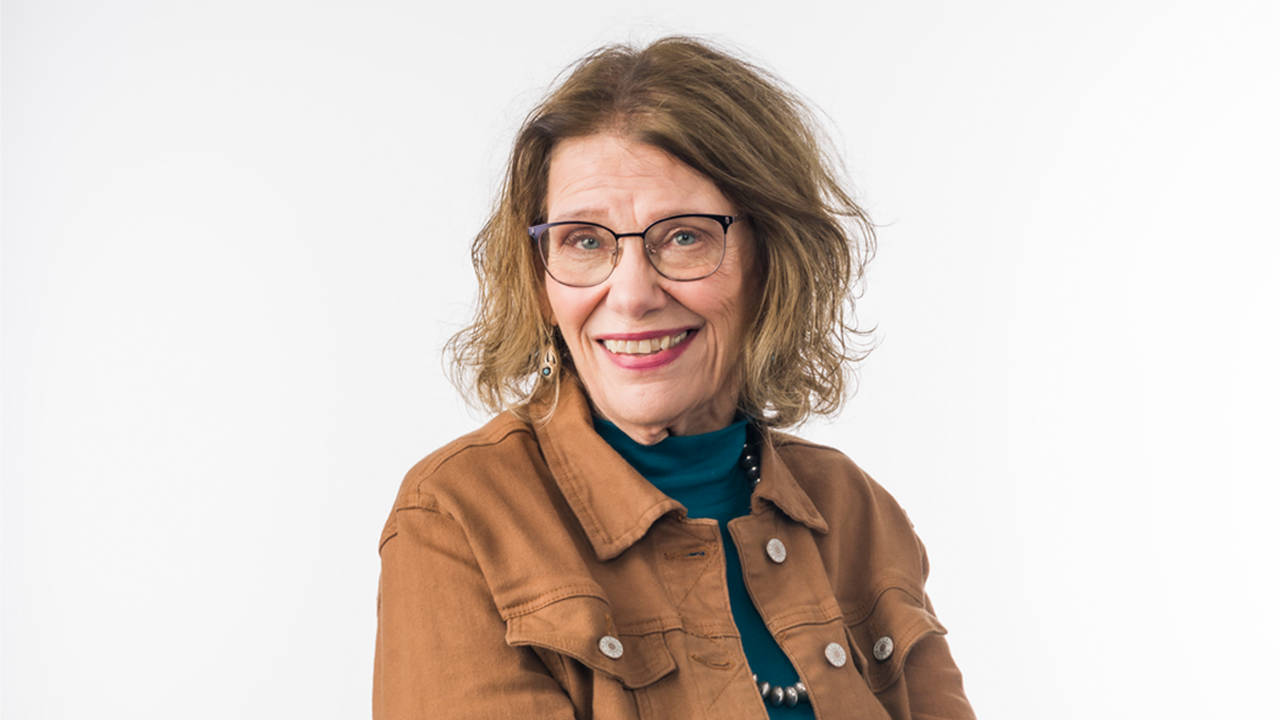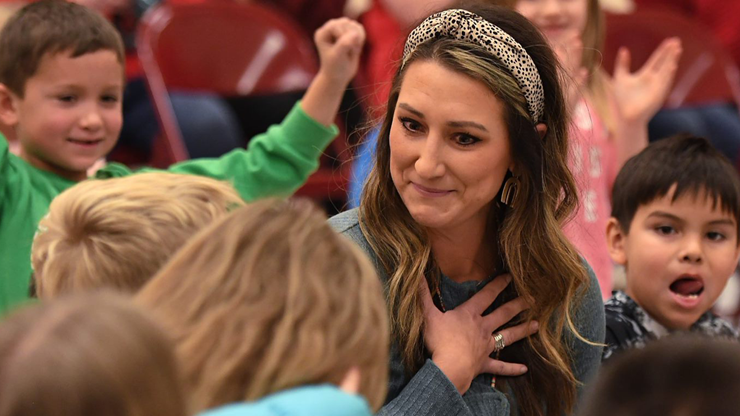Longtime South Dakota Teacher and USD Alumna Gives Insight to State of Education

Robertson graduated with her master’s in elementary education from USD in 1992, and 20 years later, she returned to USD and received her doctorate in curriculum & instruction. Now, she serves as the Native American Connections teacher at Whittier Middle School, a role she has been in for nearly 16 years.
Robertson’s interest in Native American studies began with her dad, who was passionate about Native American history in South Dakota and shared that with her. Robertson now shares this lifelong appreciation for Native American history and culture by educating the state’s young learners.
We sat down with Robertson to learn more about her educational journey, the work she does today and what she’s excited about for the future of education in South Dakota, and this is what she had to say.
Why did you choose USD? What makes it so special to you?
USD has always been our family place of education. I was born two weeks before my dad started medical school at USD, so student housing at USD was my first physical home. My dad stayed connected to USD as a professor in the medical school. He was also chairman of the Department of Pediatrics for a while. That family connection has always been there and a part of who we are as a family.
Also, my husband went to law school at USD and when he was done with law school, I did my master’s and then ultimately my doctorate. Because I was a non-traditional student, and we had kids that were older – while I was there for my master’s and my doctorate – my life was like: home, kids, teaching, USD.
What impact does your work have on the state of South Dakota?
I am a part of the Indian Native Advisory Council, and right now, our primary focus is the Oceti Sakowin Essential Understandings which have been around since 2007. Teachers in the state are supposed to incorporate these understandings and standards into their curriculum. So, to be able to educate teachers how to use those essential understandings is important for not only Native students, but also for all students in South Dakota. Having that information makes everyone a better citizen and makes us better decision makers.
What advice would you give to current students?
When you’re an undergraduate student, there’s so much stuff to do and so many social activities that are a part of the college experience that you can explore. At the same time, really take those opportunities to spend time with professors because I think that’s where a lot of your formational and educational development comes from. From my undergraduate time, I think, 'Darn, I really wish I had spent more time with that professor,' and I wish I’d gotten a bit more insight.
For students going into education specifically, taking advantage of opportunities to get into the classroom and see how things work before you’re in charge will be life changing. Even if you just volunteer in classrooms or see if there are any internships you can do, it's important to get into the classroom and see how it really works.
What were your favorite memories from your time at USD?
Because I was a non-traditional student, my favorite memories are probably different from other people who were there as undergraduate students. My favorite memories were conversations with professors. Dr. Bob Wood, Dr. Gary Cheeseman and Dr. David Evans were all wonderful. They are people that still influence me today with things that I learned from them. Dr. Maurine Richardson was another professor that gave me a lot of insight into what I was doing and what I wanted to do. Those conversations were some of my favorite memories because they gave me so much insight into what I was there for and the direction I wanted to go. They gave me sort of a vision of my way forward.
There seems to be a teacher shortage everywhere, especially in South Dakota. What advice would you give to teachers who are thinking about coming here?
Overall, this is a good place to be. If you want small schools, wide open spaces and tiny communities, we’ve got a lot of that. If you want to be in a more urban setting, we have options on both sides of the state. South Dakota is a good place to raise kids and for them to have good opportunities. I think about Sioux Falls and the programs that are available for kids in elementary, middle and high school. It’s really amazing the things that are there. I mean, having a Native American studies program in middle school and high school; I just don’t think that happens in very many places.
Is there anything happening at USD that gets you excited about where education is going or that gives you hope for the future?
The area I pay the most attention to is Native American studies. The involvement of the Tiospaye Student Council students in reaching out to high school students and kids has made a huge impact for our students. I think it is really impactful for Native students to feel like they could have a home away from home at USD, no matter what field they pursue.

